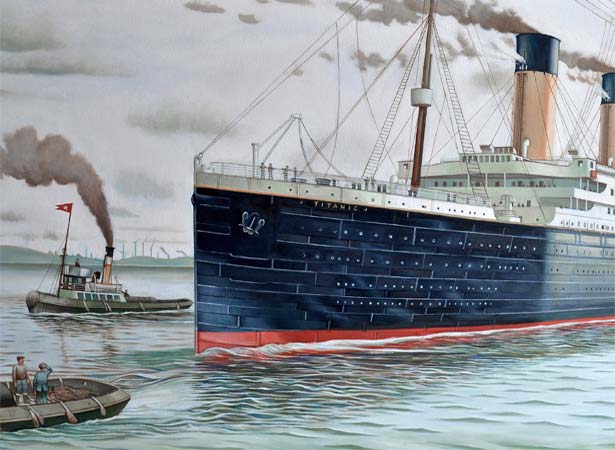
More than a century after it sank on its maiden voyage after hitting an iceberg, our fascination with the Titanic continues. In April 2012 the cruise ship Braemar sailed from Southampton on a sold-out ‘Titanic Memorial Cruise’. Closer to home, Wellingtonians enjoyed a Titanic-themed dinner. Across the ditch, Melburnians were promised ‘the most fun you will have in one night’ at the Titanic Theatre Restaurant.
Canterbury businessman J.A. Frostick had booked a berth on the Titanic’s maiden voyage, but fortunately had to change his travel plans at short notice. Although no New Zealanders were aboard the world’s largest passenger ship when it sank in the frigid North Atlantic with appalling loss of life due to a lack of lifeboats, they followed the news closely.
How New Zealanders followed the news in 1912
16 April (15 April northern hemisphere):
The first news came by cable and was necessarily brief. The Marlborough Express was wildly optimistic.
17 April:
A day later, the optimism had evaporated. The Feilding Star captured the sense of shock.
18 April:
At public meetings throughout the country, New Zealanders responded to the disaster, as the Evening Post reported.
In the days that followed, politicians, mayors and service clubs offered their condolences to their fellow Britons. Led by Dunedin, several centres held benefit concerts to aid survivors. The Titanic’s sinking had an immediate impact on New Zealand’s biggest business, the Union Steam Ship Company. One of the empire’s major shipping lines, it had offices in London and Glasgow, where it usually had at least one ship under construction.
The company’s London office began by matching the 100-guinea (equivalent to more than $18,000 in 2020) donations being made by the other big British shipping lines. On 24 April, with bodies still being recovered from the Atlantic, the company’s Dunedin-based management wrote to the minister of marine in Wellington ‘detailing what the Company are doing to provide full accommodation for all souls on board our steamers’.
In fact, most of its ships needed little or no attention. The Union Company usually built new, ordering its major liners from leading Scottish shipyards.
It was also very safety-conscious. By the time of the Titanic’s fatal voyage, all its first-class passenger ships carried radios.
The same applied to lifesaving appliances. In 1905, for example, the British Board of Trade, which did not require ships to carry lifeboats for everyone aboard, had signed off the Union Company’s new liner Maheno as carrying a lifebelt for every one of its 533 passengers and crew. The ship’s 13 boats – also in excess of Board of Trade requirements – comprised a steam launch, 10 lifeboats and two ‘Berthon’ boats (collapsible lifeboats made of canvas).
In April 1912, the company decided that in addition to increasing capacity on the few liners not carrying sufficient lifeboats, it would add additional lifesaving appliances to complying vessels. The interisland ferry Maori, for example, which already carried eight lifeboats and an ‘accident’ boat, now gained two large collapsible lifeboats and eight rafts.
Spurred by the Titanic tragedy, New Zealand’s Marine Department moved to improve lifesaving equipment on the ships of other companies. Cruise liners leaving New Zealand ports still begin their voyages with lifeboat drills and carry boats and rafts for everyone – with room to spare.
External links
How to cite this page
'News of Titanic sinking reaches New Zealand', URL: https://nzhistory.govt.nz/page/news-titanic-loss-reaches-nz, (Ministry for Culture and Heritage), updated 20-Oct-2020

Community contributions